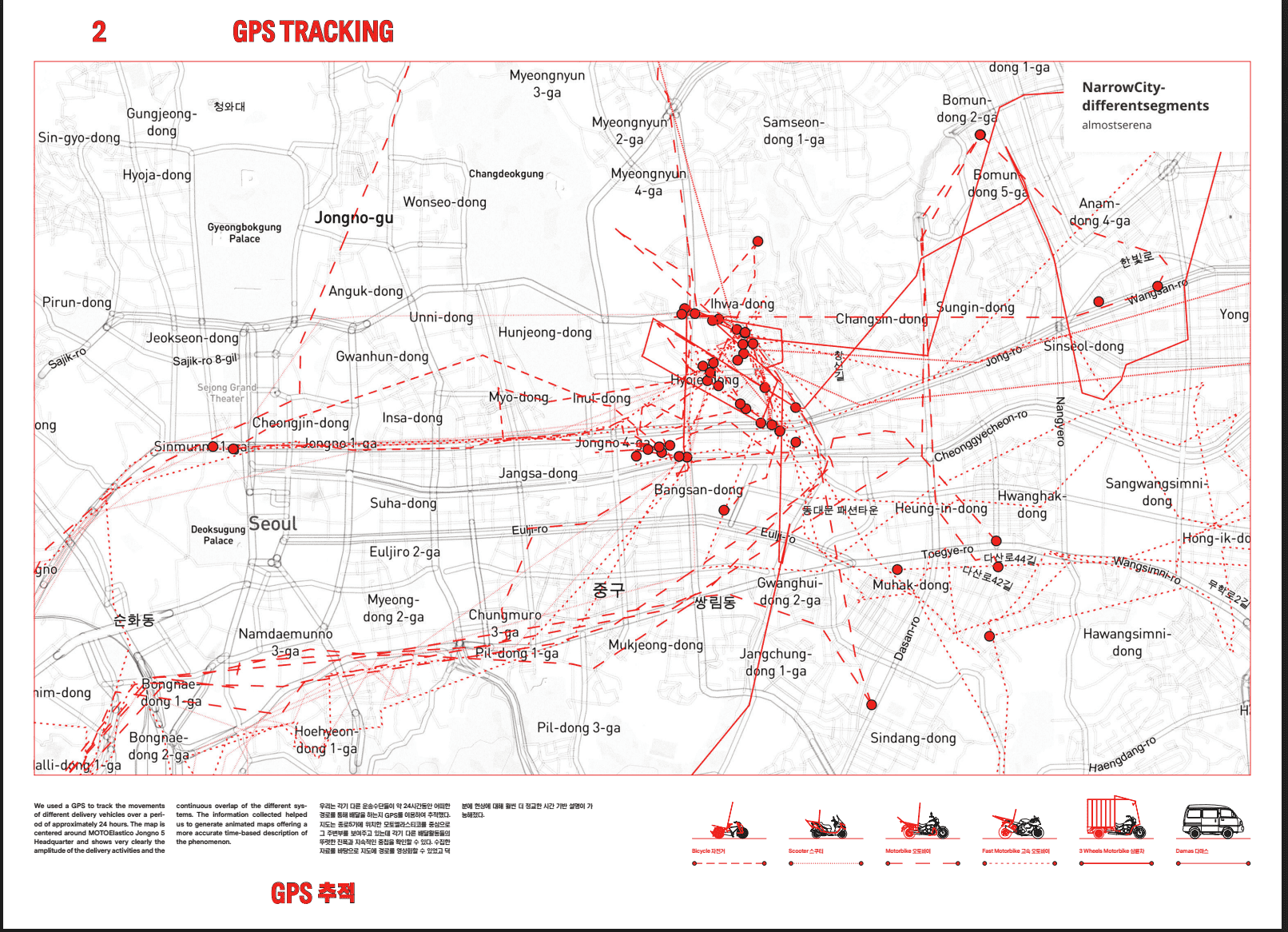Serena Cangiano - KR

What made you decide to apply for a grant at the Leading House Asia?
As a researcher and educator, I am interested in topics such as open design and manufacturing, data visualization, fablabs and interaction design.
In 2017, I was looking for an exchange research program to connect some of my research interests in one project and within a different cultural research environment.
Considering its excellence in both technology and design, South Korea seemed to me the perfect country (and context to connect with) to carry out an applied research project that could bridge many knowledge domains.
From May to September 2017, at IDAS Hongik and under the supervision of prof. Simone Carena, I took part to an investigation on the connection between the mobility and the productive infrastructure in Jongno-gu, a central district of Seoul (South Korea), in particular in the area between Dongdaemon Design Plaza and the complex of Sewon Sanga.
That area was chosen as a case study for exploring how the combination of digital technologies, open data and digital manufacturing can drive a model of urban development.
Over three months, I could achieve my goal and work autonomously on an innovative research project whose outputs were featured in a public exhibition, Narrow city, organized within the first Architecture Biennale of Seoul.
How did you secure a host professor?
Thanks to the Swiss Science and Technology of Office in Seoul, I have been introduced to the work of Simone Carena, professor at IDAS International Design school for Advanced Studies of Hongik University, one of the top design university of South Korea.
Looking at prof. Carena’s projects and educational activities, I could easily picture the fertile environment for my research interests.
The Leading House Asia provided the funding for making the research happen.
How would you describe your experience of the programme?
The general scope of the research activity was to experiment with the opportunity to gather information about the area of Jongno by using GPS technology for tracking vehicles and the related delivery system. The tracking activity involved a group of delivery men in experimental sessions in which they carried a mobile phone monitoring their movements over one working day. The sessions had the goal to gather data on the vehicles’ “behaviors” in the city.
To gather the data, I spent most of my time in the narrow streets of Sewon Sanga and at the traditional food market Gwangjang Market to involve the delivery men with their motorbikes or the women of the food deliveries. At one point, I think that all workers at the market knew me and shared their greetings as I was one of them.
After the tracking sessions, I also enjoyed the collaboration with the team of prof. Carena and of the architectural practice MotoElastico on the preparation work for the exhibition Narrow City.
What were the impacts you made through the project/partners/individual?
Today’s’ advancements in mobile technology allows to think about cities as data aggregators in which a constant flow of information about people and goods is exchanged. The city becomes information than can be digitally mapped and visualized. With this research project, I could generate an innovative visualization of Seoul mobility and delivery system that allowed to generate insights for the main research project run by prof. Carena.
Moreover, I managed to release open datasets of the tracking session that helped other researchers of the team analyzing the Jogno-gu area and its development.
I could expand my network by vising different research and innovation laboratories. I could also develop new skills by joining a workshop (at the amazing Dongdaemun Design Plaza) on open source mapping practices held by researchers from MIT Senseable Media Lab.
Testimonial: what were your personal experiences/thoughts on the bilateral cooperation experience?
During the research exchange, I had the chance to adjust my research plan and focus also on expanding the connections with other research and innovation spaces in Seoul. Thanks to this flexibility and openness, I was able to get in contact with non-academic research realities: I have been incredibly surprised, for example, by the activities run by the FabLab Seoul a community driven education space located in the core of the “maker” neighborhood of Seoul, Sewon Sanga.
This opportunity worked as a key enabler for me to reduce the disciplinary barriers of traditional research environments.